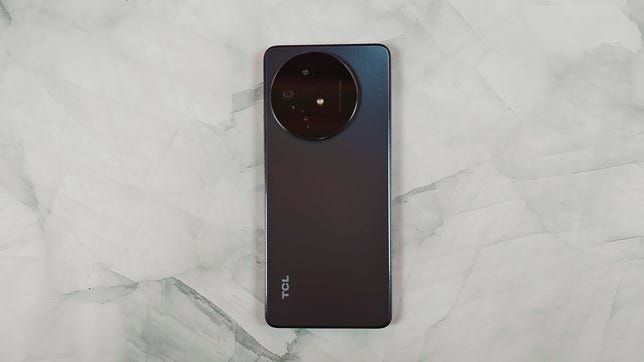
Pros
- Great screen for price
- NFC support
- Decent multitasking
Cons
- T-Mobile exclusivity
- Big battery drains fast
- Weak camera
The TCL 50 XL 5G instantly impressed me. TCL packed a bunch of significant specs into a $160 phone. During my first impressions, I was quickly surprised by the phone’s big display, high refresh rate and its inclusion of NFC for Google Pay. Toss in its relatively clean build of Android, 128GB of storage and 6GB of memory, and the 50 XL quickly feels like a complete steal.
But there are trade-offs. For instance, the 50 XL’s display isn’t bright enough to be visible outdoors on a sunny day — even when I set it to 100%. It’s an issue that we’ve seen on more expensive budget phones like Google’s Pixel 6A and can be crudely dealt with by waiting to use the 50 XL until you’re indoors or under some shade.
The TCL 50 XL’s 5,010mAh battery, while big, is power-hungry and drained quickly in my tests compared to similar phones. During a 45-minute battery endurance test, where I put the TCL through a mix of activities like a video call, YouTube streaming, texting and social media, the phone got warm to the touch. Admittedly I had the phone’s refresh rate set to run at a constant 120Hz, which is more demanding than the phone’s default “smart” mode that swaps between 60Hz and 120Hz. But this is still the first time I managed to physically heat up a phone that costs under $200 through normal use.
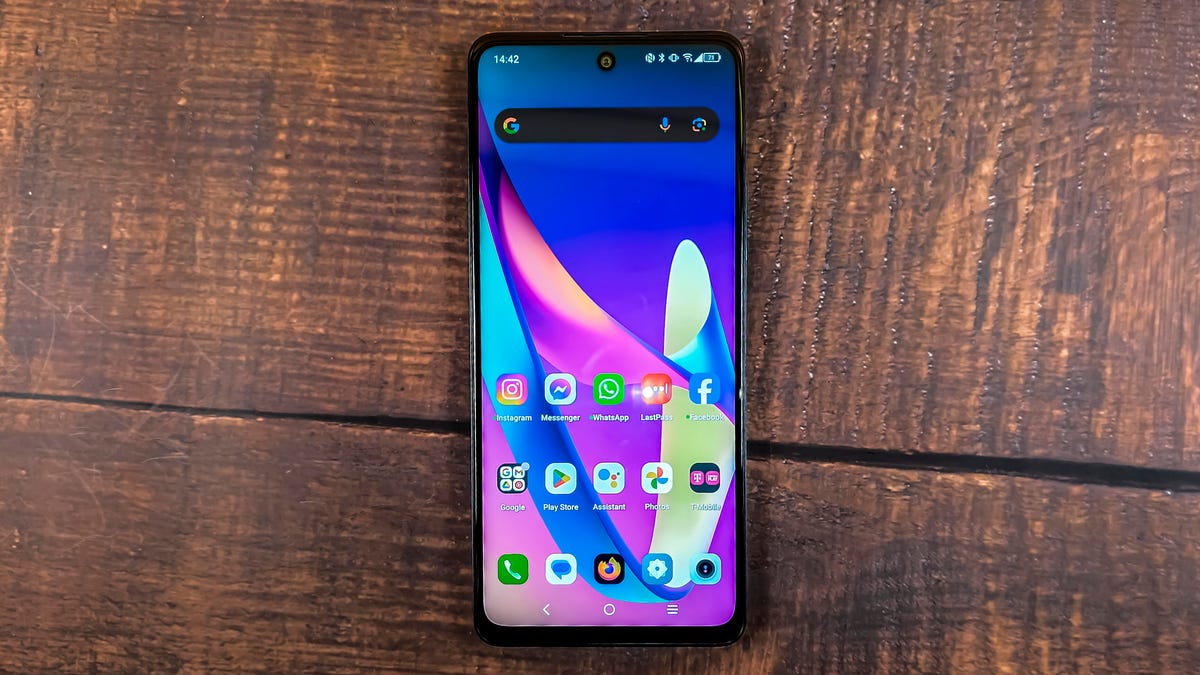
The 6.78-inch display is a highlight for TCL’s $160 phone.
But even this battery issue is manageable, as its 18-watt wired charging is a decent speed for a $160 phone in the event you need to give it a midday recharge. That speed is faster than the 15-watt wired charging offered by this year’s $150 Moto G Play and slower than the 25-watt charging offered on the $200 Samsung Galaxy A15.
If you see the pattern, it’s easy to be forgiving about the TCL 50 XL’s faults because otherwise has many higher-end features at a very low price — the lowest price I’ve seen so far for these features. But there are two major issues that will severely limit who should get the TCL 50 XL.
The biggest of these is carrier availability. For now, the TCL 50 XL 5G is a T-Mobile exclusive that’s being sold by its Metro brand. I was able to get my T-Mobile SIM card to work, but you’re clearly limited to the magenta carrier if you want to buy this device.
Another drawback is lifespan. The 50 XL lags behind in its software and security support. TCL promises one major software update and two years of security updates. This matches the Moto G line for pledged software updates, but Motorola gives its phones three years of security updates. It’s also quite behind Samsung’s commitment of four years of software updates and five years of security updates for the Galaxy A15.
But if you’re a T-Mobile customer in need of a cheap phone and are OK with the two years of software support, the TCL 50 XL 5G is worth a look.
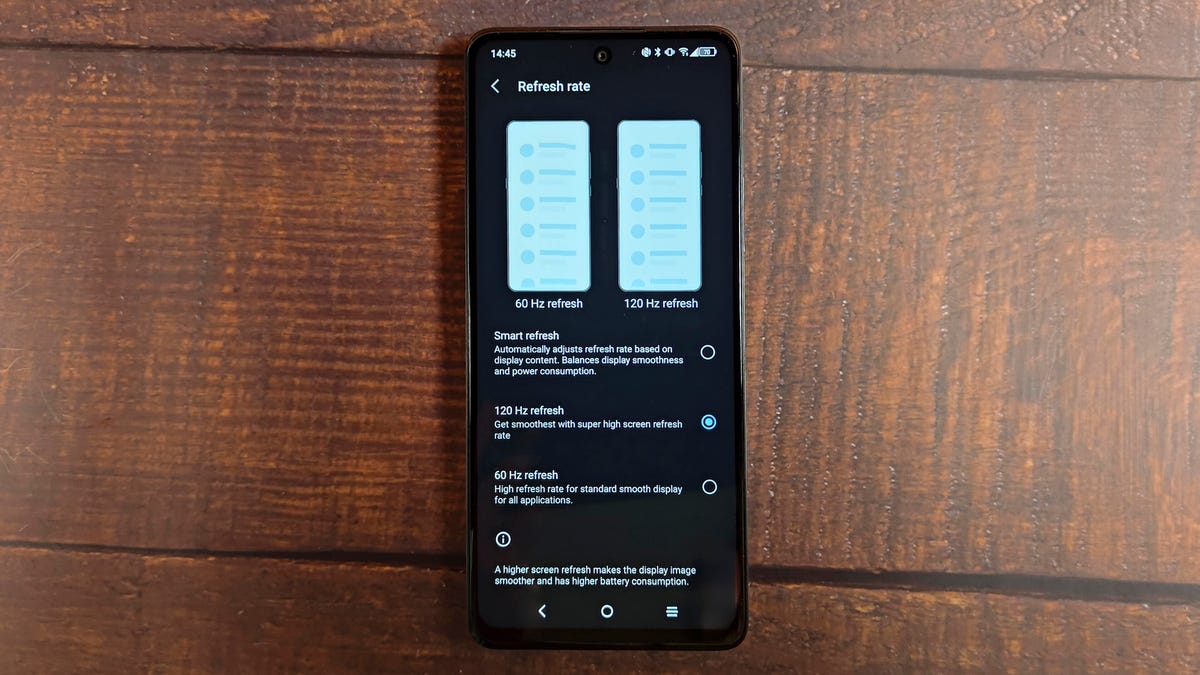
The TCL 50 X 5G can be set to a consistent 120Hz refresh rate, an adaptive mode or a consistent 60Hz.
TCL 50 XL 5G’s screen, features, battery life
As the “XL” in the name implies, this is a big phone. The 6.78-inch display dwarfs the $349 Nothing Phone 2A‘s 6.7-inch display. But what’s particularly unique about the 50 XL is how at $160 it includes a 1080p resolution-panel with a 120Hz refresh rate, which helps make Android animations and graphics in games look smooth.
The large display was ideal when I played games like Dead Cells, helping make the on-screen controls easier to use. When I streamed season 6 of Netflix’s The Circle, the high-definition stream showed off the reality show contestants’ colorful apartments. Colors are further emphasized through TCL’s NxtVision setting, which adds more saturation when I watch videos or play games.
I’m not wild about the speakers, though. While it’s seemingly a plus that there are two, my ears couldn’t clearly pick out audio details when cranking the volume higher. I should note that most cheap phones have only a single speaker. I preferred to either connect my Bluetooth headphones or make use of the 3.5mm headphone jack instead.
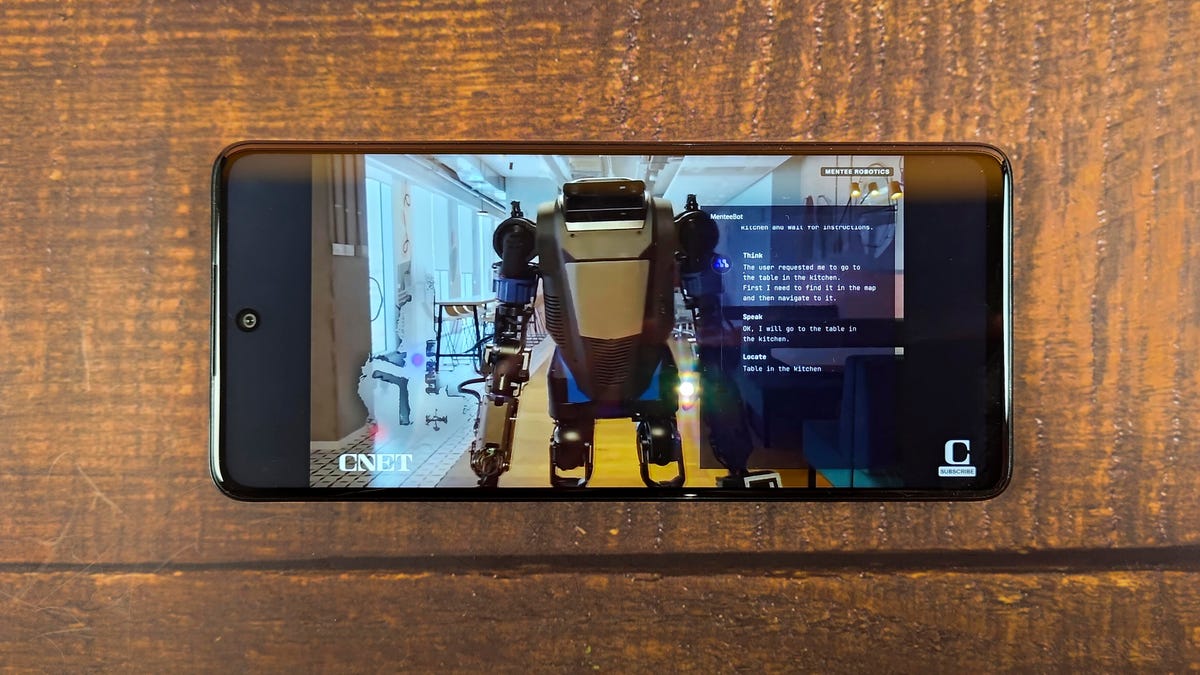
Videos look good on the TCL 50 XL’s screen. But they don’t sound good through its speakers.
The 6GB of memory is a surprising inclusion for a phone at this price and made it easy for me to launch several apps and games and switch between them without needing to reload any. By comparison, I experienced the opposite while testing the $200 Moto G 5G, which includes 4GB of memory. TCL includes a RAM expansion setting, that’s on by default and uses up 6GB of the phone’s regular storage to simulate an additional 6GB of memory, which likely provides some additional multitasking assistance.
The MediaTek Dimensity 6100 Plus is doing substantially more than last year’s TCL 40 X 5G phone by powering a higher-resolution and higher-frame rate screen, and that might partly explain why the phone’s battery life takes a bigger hit with normal use. The 50 XL 5G scored comparably to last year’s phone on performance benchmarks when running the Geekbench 6 CPU test and the 3DMark Wild Life Extreme graphics test.
TCL 50 XL 5G vs. TCL 40 X 5G vs. Moto G 5G (2024) benchmark testing
TCL 50 XL 5G 698 1,881 338; 2.03fpsTCL 40 X 5G 719 1,883 332; 1.99fpsMoto G 5G (2024) 845 1,851 297; 1.76fps
- Geekbench 6.0 Single Core
- Geekbench 6.0 Multi Core
- 3DMark Wild Life Extreme
In our YouTube streaming battery test, in which we play a 3-hour video while setting the phone’s brightness to 100%, the TCL 40 X 5G’s drained from full to 76% while the 50 XL drained to 62%. The 40 X has a comparably sized 5,000mAh battery, but the less-powerful 720p 90Hz display likely consumes less power than the 50 XL’s 1080p 120Hz display.
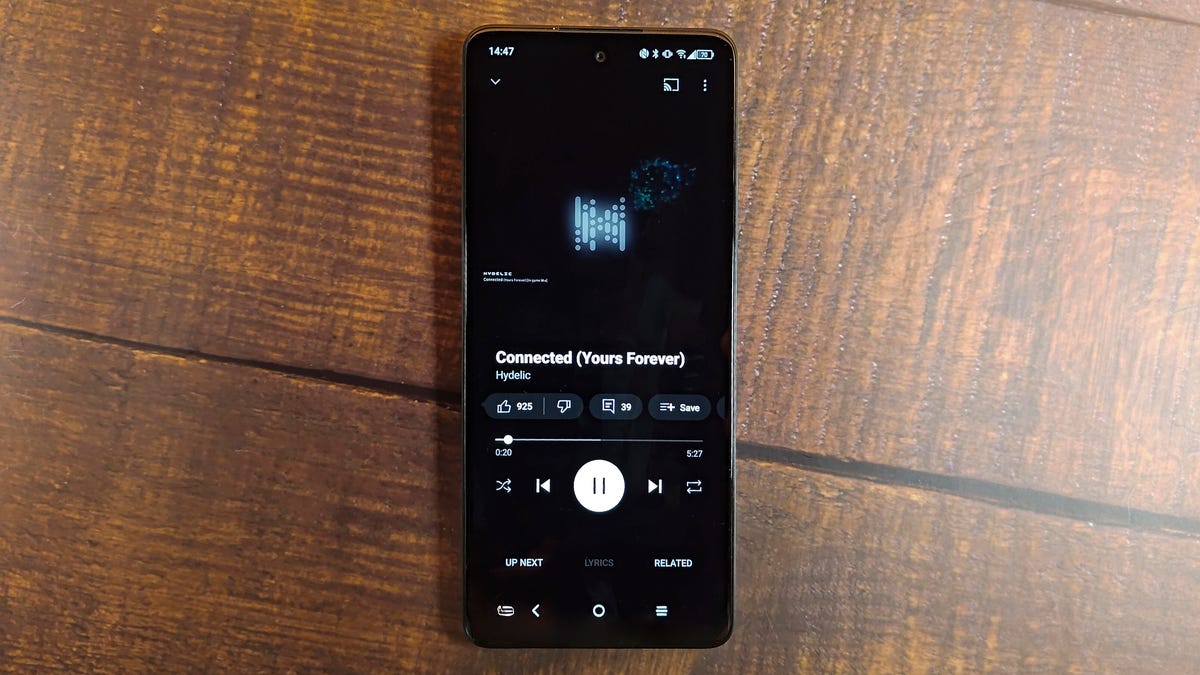
The TCL 50 XL 5G includes a headphone jack in addition to Bluetooth audio support.
Despite this noticeable drain, I was generally able to get through a day of use when using the 50 XL, however someone playing intensive games or media should probably consider setting its display to the “Smart” refresh mode or to the less-intensive 60Hz in order to extend battery life.
On the software side, the TCL phone runs on Android 14 that includes the company’s TCL UI skin, which adds largely decorative touches. Then there’s the bloatware with T-Mobile itself including unwanted software and apps by default. While the 50 XL’s T-Mobile exclusivity likely helps the phone hit its cheaper price, it’s distracting to see the carrier brand itself into the Google Now feed by including its own T-Mobile Play feed. This issue however isn’t limited to just this TCL phone, and it is possible to deactivate the T-Mobile Play feed by diving into the phone’s settings menu and disabling the app.
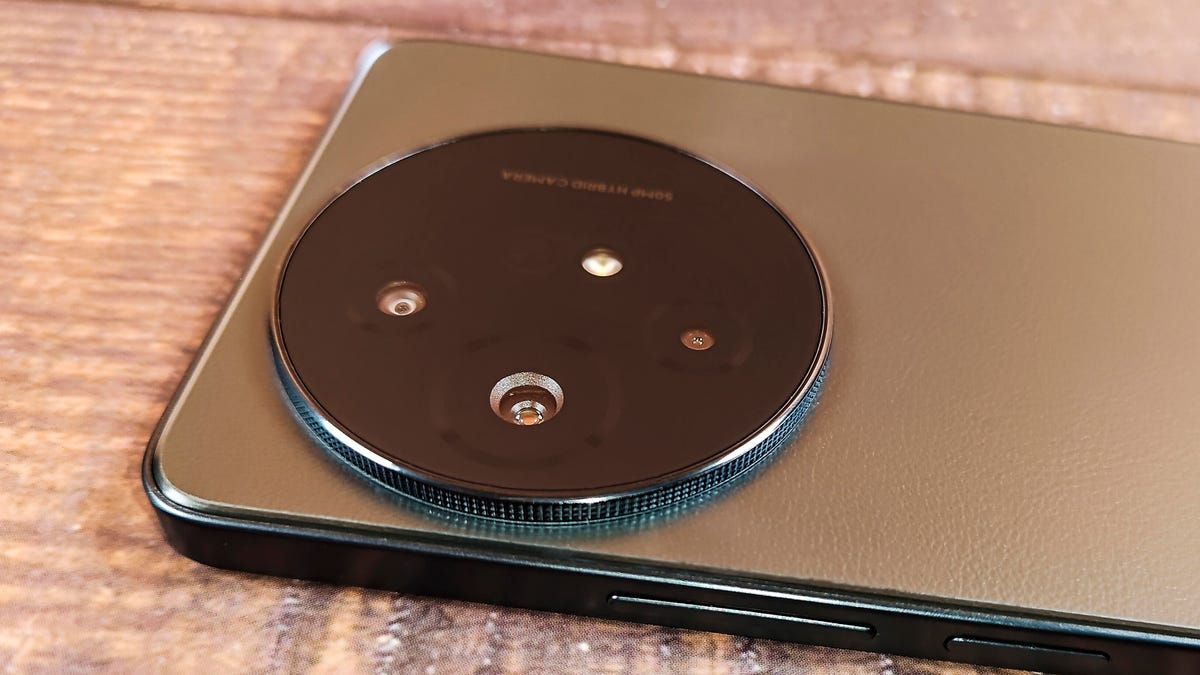
The TCL 50 XL’s cameras are housed in this large, circular module.
TCL 50 XL 5G cameras
The TCL 50 XL 5G’s large camera bump houses a trio of lenses: wide, ultrawide and one for depth. The main camera has a 50-megapixel sensor, the ultrawide a 5-megapixel sensor and the depth camera a 2-megapixel sensor for things like portrait mode. But the cameras aren’t a selling point.
Photos taken by it are functional and are capable of displaying a colorful scene in good lighting – as most phones. However, I took images of close-up details or a photo in a lower-light setting, the 50 XL’s cameras didn’t deliver.

The takoyaki being cooked at the Karl’s Balls vendor at a street fair.
I took the TCL 50 XL 5G to a street festival in order to try out the takoyaki made by Karl’s Balls, a food vendor I follow on Instagram. Since it was a sunny day, the 50 XL did a decent job. My photos showed the browned exterior of the large takoyaki balls I ordered matching the color they looked like in real life. However, photos of the creamy interior had muddy, almost blurry details. Color accuracy is good, take a look at this photo I took of the fried octopus ball cut in half, but the details like the shiny texture of the filling is largely nonexistent.

The insides of this takoyaki have a creamy texture, but that detail is lost in this photo taken by the TCL 50 XL.
Here’s a wider shot of the booth, that crisply captured the bustling crowds without any noticeable motion blur.

This wider shot of the booth fairs better, with the TCL 50 XL taking a clear photo despite there being a lot of movement from the crowds and from the workers cooking.
And here’s a selfie I took on a cold, cloudy Saturday. It’s me, yes. But the image looks flat with me blending in with the dreary weather in the background.

Self-taken photo using the TCL 50 XL.
I attempted to take an evening photo while walking to a jam session Friday night, and, oh, it didn’t look good. It could have looked a little better if I stood completely still, but this isn’t the kind of phone camera that will be good in most situations.
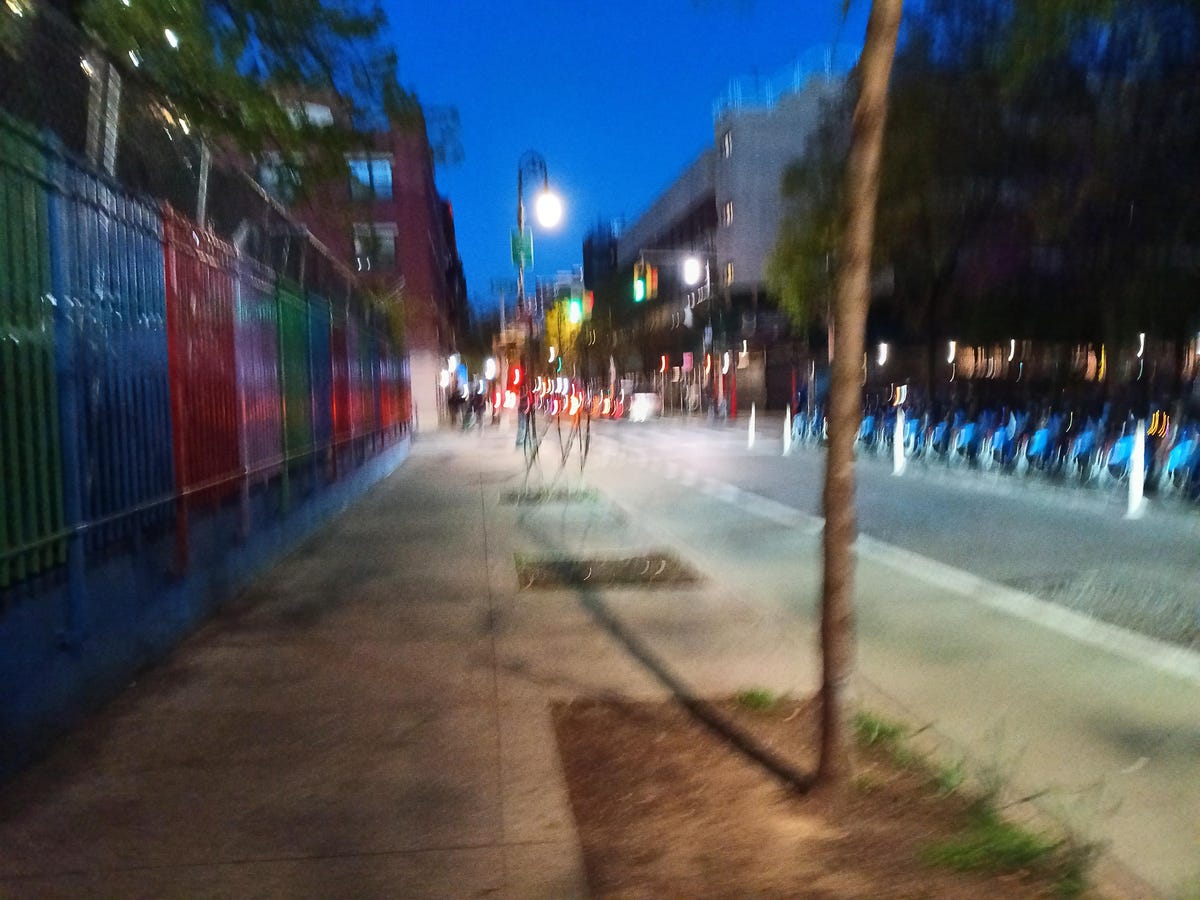
An evening street photo taken on the TCL 50 XL while walking.
The rear camera captures video at 1080p at 30 frames per second, and the quality isn’t much better than photos. You can get a functional video for a quick share, but it’s going to have a fuzzy look to it since it struggles with details.
It’s still worth noting that for a $160 phone, camera quality is usually the most notable feature that gets sacrificed. Compared with the $200 Moto G 5G, there is a noticeable improvement to how Motorola’s phone takes photos. In my camera test that uses a grass wall in CNET’s office, the Moto G 5G’s photo shows more color depth and detail than the TCL image.

The grass wall in CNET’s office, taken on the TCL 50 XL 5G.

The grass wall at CNET’s office taken on the Moto G 5G.
These issues aren’t necessarily deal breakers for calculating whether a cheaper phone is worth the price, but it’s important to be realistic that we’ve yet to use a $200 phone that takes photos you’d be dying to get printed or videos that you’d want to edit into a YouTube vlog.
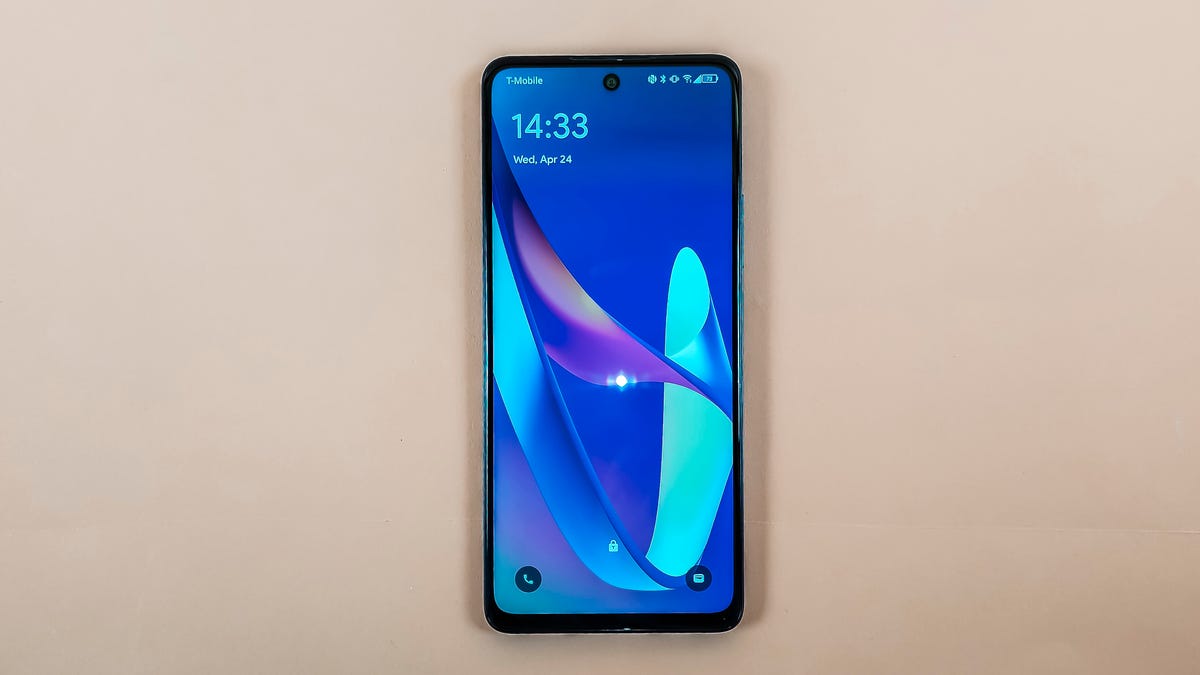
The TCL 50 XL 5G will get one software update and two years of security updates.
TCL 50 XL 5G bottom line
TCL deserves recognition for cramming so many features from pricier devices into the $160 50 XL 5G. This includes its 1080p-resolution 120Hz screen, NFC for contactless payments, and 128GB of storage and 6GB of RAM for multitasking.
It’s too bad that its T-Mobile exclusivity will severely limit its audience. On the bright side, if you picked up the phone while moving to Metro by T-Mobile, it’s likely that the phone would be free through the carrier’s signup offer.
And while I am normally not thrilled with a phone that gets only two years of security updates, at this lower price it’s easier to stomach as long as you know to move onto a new device after its security updates end. If you can live with the two-year lifespan, the TCL 50 XL 5G provides a lot of value. But if you hope to use the phone for three years or longer, you should check into what Motorola offers with its Moto G line or Samsung’s Galaxy A phones, which will get more years of security updates.
TCL 50 XL 5G vs. Motorola Moto G 5G (2024) vs. TCL 40 X 5G
| TCL 50 XL 5G | Moto G 5G (2024) | TCL 40 X 5G | |
|---|---|---|---|
| Display size, resolution | 6.78-inch, 2,460 x 1,080 pixels, 120Hz refresh rate | 6.6-inch LCD; 1,612 x 720 pixels, 120Hz refresh rate | 6.56-inch; 1,612 x 720 pixels; 90Hz refresh rate |
| Pixel density | 396 ppi | 269 ppi | 269 ppi |
| Dimensions (inches) | 6.6 x 2.9 x 0.32 in. | 6.5 x 3 x 0.3 in. | 6.47 x 2.97 x 0.35 in |
| Dimensions (millimeters) | 167.6 x 73.6 x 8.1mm | 164.4 x 75 x 8.2mm | 164.46 x 75.4 x 8.99 mm |
| Weight (ounces, grams) | 195g (6.9 oz) | 194g (6.84 oz) | 195 g (6.9 oz) |
| Mobile software | Android 14 | Android 14 | Android 13 |
| Camera | 50-megapixel (main), 5-megapixel (ultrawide), 2-megapixel (depth) | 50-megapixel (main), 2-megapixel (macro) | 50-megapixel (main), 2-megapixel (macro), 2-megapixel (depth) |
| Front-facing camera | 8-megapixel | 8-megapixel | 8-megapixel |
| Video capture | 1080p | 1080p | 1080p |
| Processor | MediaTek Dimensity 6100 Plus | Qualcomm Snapdragon 4 Gen 1 | MediaTek Dimensity 700 |
| RAM/Storage | 6GB RAM + 128GB | 4GB RAM + 128GB | 4GB RAM + 64GB |
| Expandable storage | Yes | Yes | Yes |
| Battery/Charger | 5,010 mAh | 5,000 mAh | 5,000 mAh |
| Fingerprint sensor | Side | Side | Side |
| Connector | USB-C | USB-C | USB-C |
| Headphone jack | Yes | Yes | Yes |
| Special features | NFC, 5G connectivity, TCL NxtVision, 18W wired charging, RAM Extender | 18W wired charging, Dolby Atmos, NFC, water repellent, gesture controls, Moto Secure, RAM Boost | 5G, 18W wired charging, TCL NxtVision |
| Price off-contract (USD) | $160 (128GB) | $200 (128GB) | $180 (64GB) |
| Price (GBP) | Converts to £128 (128GB) | Converts to £159 (128GB) | Converts to £145 (64GB) |
| Price (AUD) | Converts to AU$242 (128GB) | Converts to AU$303 (128GB) | Converts to AU$275 (64GB) |
How we test phones
Every phone tested by CNET’s reviews team was actually used in the real world. We test a phone’s features, play games and take photos. We examine the display to see if it’s bright, sharp and vibrant. We analyze the design and build to see how it is to hold and whether it has an IP-rating for water-resistance. We push the processor’s performance to the extremes, using standardized benchmark tools like GeekBench and 3DMark as well as our own anecdotal observations navigating the interface, recording high-resolution videos and playing graphically intense games at high refresh rates.
All the cameras are tested in a variety of conditions, from bright sunlight to dark indoor scenes. We try out special features like night mode and portrait mode and compare our findings against similarly priced competing phones. We also check out the battery life by using the phone daily as well as running a series of battery drain tests.
We take into account additional features, like support for 5G; satellite connectivity; fingerprint and face sensors; stylus support; fast charging speeds; and foldable displays, among others that can be useful. And we balance all this against the price to give you the verdict on whether that phone, whatever price it is, actually represents good value. Though these tests may not always be reflected in CNET’s initial review, we conduct follow-up and long-term testing in most circumstances.



















+ There are no comments
Add yours